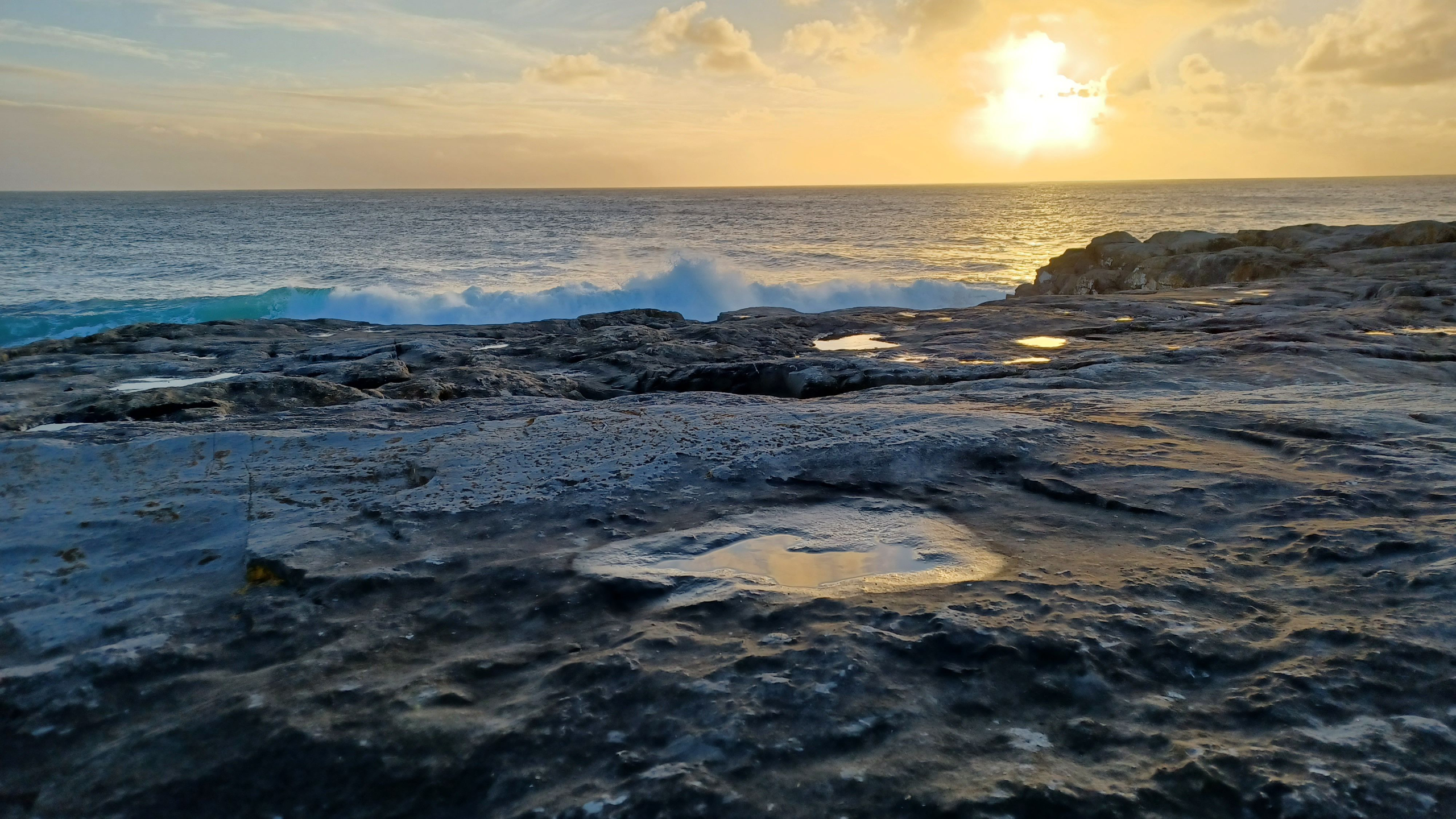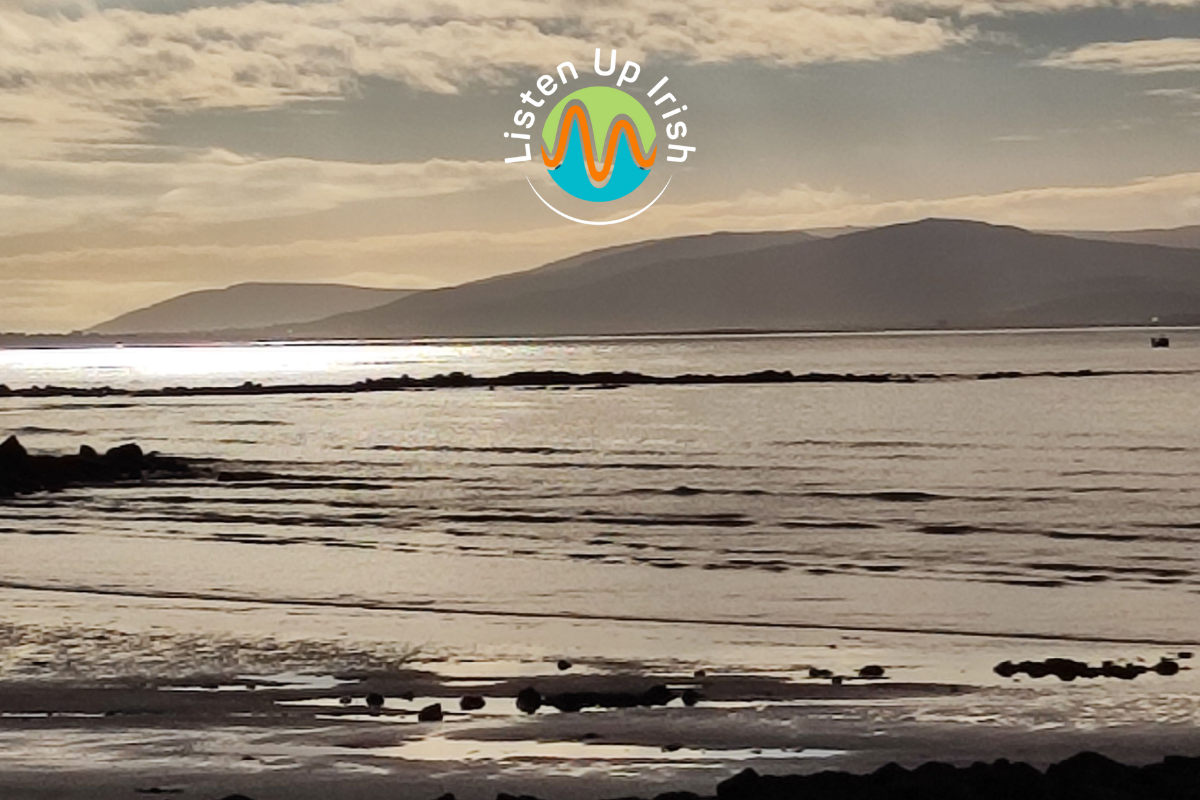How to say 'hello' in Irish
Listen to the short clip above to hear how to say 'hello' in Irish. Read on for a little more information about this important phrase. 'Dia duit' is a shortened version of a longer phrase 'go mbeannaí Dia duit.'
Dia duit!
'Dia duit' is the traditional and probably still the most common way to greet somebody in Irish. For a beginner it's unfortunately a tricky little phrase! This is because the way it is pronounced varies across the dialects, and so the way the phrase is written will not always reflect the way it is said!
How to pronounce the 'D' in 'Dia'
Let's start with the first word in the phrase: 'Dia'.
'Dia' is the Irish word for 'God'. It's always written with a capital D.
By the way 'God' crops up in greetings and farewells in many languages: think of 'Adieu' (unto God) in French; Adios (unto God) in Spanish. Even 'goodbye' originates in the phrase 'God be with ye!').
Another fun fact about the word 'Dia' is that it contains an example of what is called a slender d sound.
Slender and broad sounds in Irish
In Irish most of the consonants can be pronounced in two ways: a slender version, and a broad version.
A broad 'D' sounds quite similar to the 'd' sound in the English word 'door'. (Think of the Irish words: Doras (door) / Doire (Derry))
A slender 'D' sounds more like a 'j' sound as in the English name 'Jerry'. (Think of the Irish words: Dia / diabhal (devil))
Compare the Irish names 'Dónall' (pron. Doh-nall) and 'Diarmuid' (pron. something like Jeer-mud) to spot the difference between broad and slender D sounds.
The broad version of a consonant will be flanked by any of the vowels a / o / u; the slender version will be flanked by any of the vowels i /e.
The slender 'D' sound
There is quite a variation in how close the slender D sound is to the 'j' sound in English. In Munster Irish the slender d sound is generally pronounced much softer than in the Connacht and Ulster dialects. As a beginner just keep your ears open for these variations, and enjoy the subtle differences in the way the language is pronounced regionally. In the video above listen to how the slender D is pronounced in Connemara Irish (a type of Connacht Irish).
Moving on to 'duit'
'Duit' literally means 'to you'.
When you say 'Dia duit' to someone you are wishing God on them.
Go mbeannaí Dia duit!
'Dia duit' is a shortened form of the longer phrase 'Go mbeannaí Dia duit' (may God bless you). (For intermediate learners: 'go mbeannaí' is a nice example of the subjunctive mood/an modh foshuiteach which I wrote about in this previous post).
'Beannaigh' means 'bless' and it is used with the preposition 'do' (to).
'Go mbeannaí' is the subjunctive form of the verb.
Go mbeannaí Dia / May God bless
Dia duit or Dia dhuit?
One of the unfortunate things about Irish (and many other languages) is that words are not always pronounced exactly as they are written!
There are a few reasons for this: the way in which words are pronounced changes over time even as the written word remains true to the earlier pronunciation: think of the word 'knife' in English. The 'k' sound was once pronounced fadó fadó / a long time ago. Even though we no longer pronounce a 'k' sound at the start of the word the spelling of the word hasn't changed. There are lots of examples of this in English: gnome / through / knight etc.
There is another reason, however, why Irish words are not always pronounced as they are written, and this is due to regional variation. This happens in English too of course. New Zealanders say 'tin' (10), but write 'ten'; Irish people often say 'tree' (3), but, of course, write 'three'. Just as there are differences in pronunciation in English, there are differences in how Irish is pronounced.
In fact, Irish can be divided into three main regional variations, or dialects: Munster Irish; Connacht Irish and Ulster Irish. While all three dialects are mutually intelligible there are variations in certain choices of word, and in pronunciation between the dialects.
In Munster and Connacht Irish 'duit' in the phrase 'Dia duit' is pronounced as if it were written 'dhuit', not 'duit'!
(And this means that learners have to come to grips very quickly with a slightly tricky sound in Irish: dh!)
Take note of how 'duit' is pronounced in the short clip above. If this were written exactly as it is spoken it would be written 'dhuit'. This 'dhu' sound doesn't exist in the English language and so will take a little practice!
Dia is Muire duit
The response to 'Dia duit' is 'Dia is Muire duit', basically throw Mary into the mix. The first person is saying 'God bless you' and the second person is upping the ante by giving not just God's blessing, but Mary (Muire) too.
'is' here is the shortened version of the word 'agus' (and).
How are you? (Connacht Irish)
In Connacht Irish you will hear 'cén chaoi a bhfuil tú?' when asking how someone is.
This literally means 'what the way are you?'
caoi / way
an chaoi / the way
cén / what the
cén chaoi / what the way
This can be a slightly tricky phrase to get the hang of. When someone is speaking more quickly the 'n' of 'cén' is usually dropped. The next sound is the 'cha' of 'chaoi' and, again, this can be a slightly more difficult sound for a learner as this sound does not exist in English. Think of the 'ch' in the word 'Bach' and you are approaching the correct sound here!
Ná déan dearmad / Don't forget
Cleachtadh a dhéanannn máistreacht / Practice makes perfect (lit. practice makes mastery)
How are you? (Munster Irish / Ulster Irish)
'Cén chaoi a bhfuil tú?' will never pass the lips of a true speaker of Munster or Ulster Irish!
The way to say 'how are you?' in Munster Irish is 'conas atá tú?'
Ulster speakers will say: 'Caidé mar atá tú?'
Which one to use?
If you've just started learning Irish it's probably pretty frustrating to be immediately confronted with three different ways to say the simple phrase 'how are you?'. Don't stress! Just understand all three, then pick one to use yourself and go with that one for now. You can always change later! And whatever Irish you speak is better than no Irish at all!
How to learn Irish
If you've never learned any Irish, or have just done some Irish on Duolingo or another beginner course then my Beginner Irish course is a great place to start. Read all about it here, and make sure to contact me if you have any questions at all. If you've intermediate level Irish then have a look at my Beyond Beginner course, or my Present Tense course. If you're not sure of your level just send me a message here and I will help you decide which is the right course for you.




